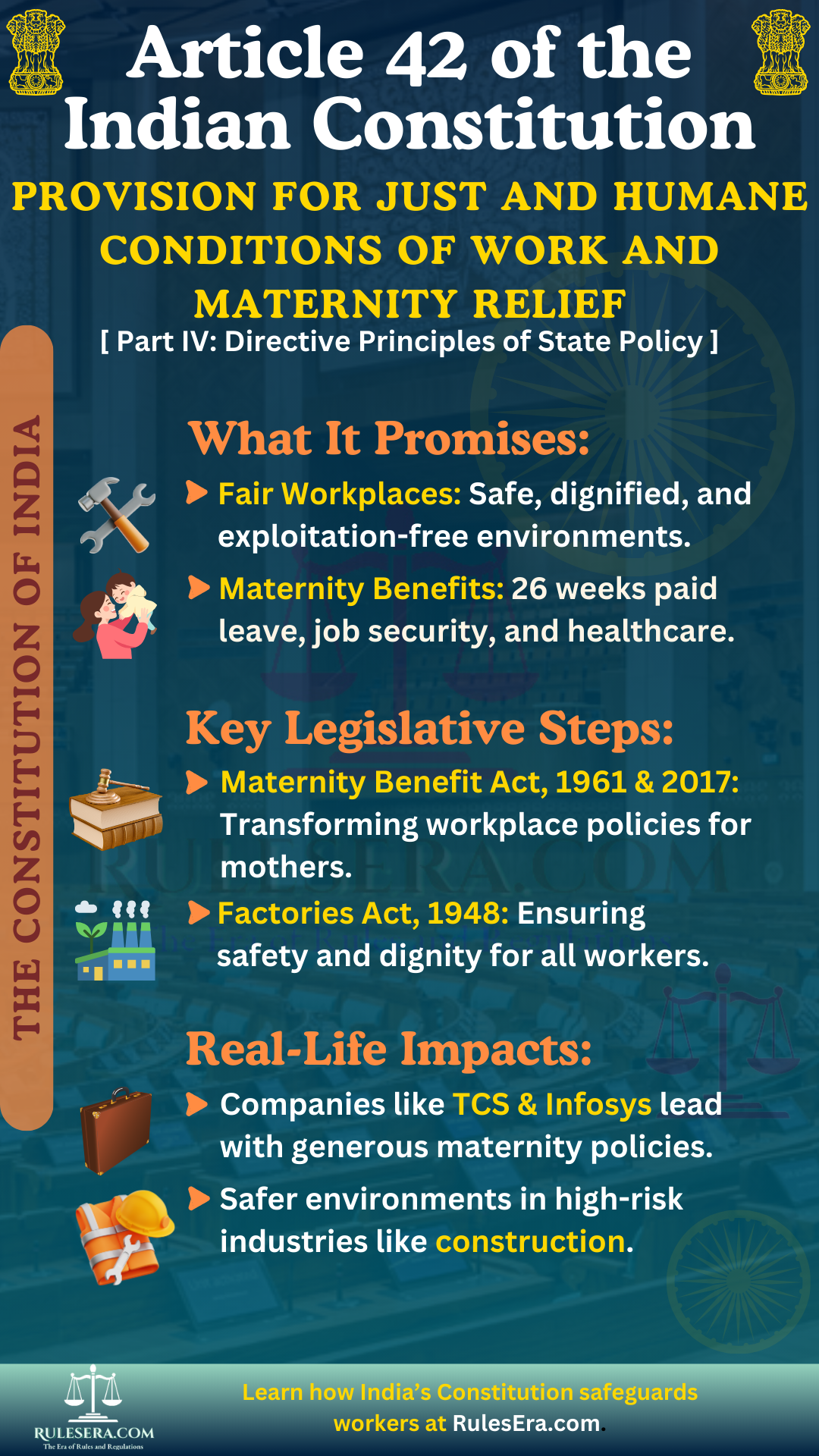Part IV: Directive Principles of State Policy
Article 42: Provision for just and humane conditions of work and maternity relief

--- Original Article ---
The State shall make provision for securing just and humane conditions of work and for maternity relief.
Explanation
Article 42 is part of the Directive Principles of State Policy, guiding the State in securing just and humane working conditions and maternity relief for women. This reflects India's commitment to labor rights and gender equality.
Securing Just and Humane Conditions of Work
The State must ensure that workers are provided with safe and fair working environments, which include reasonable working hours, adequate rest periods, and protection from exploitation.
Provision of Maternity Relief
Article 42 mandates the State to provide women with maternity benefits, ensuring paid leave, job security, and healthcare during pregnancy and after childbirth. This supports both the health of the mother and child.
Amendments and Legislative Measures
The Maternity Benefit Act, 1961 provided women with 12 weeks of paid leave, which was increased to 26 weeks under the Maternity Benefit (Amendment) Act, 2017. Additionally, laws like the Factories Act, 1948 have regulated work conditions to ensure worker safety and prevent exploitation.
Real-Life Examples
- Corporate Compliance with Maternity Benefit Act: Companies like Tata Consultancy Services (TCS) and Infosys have implemented generous maternity leave policies in line with the 2017 amendments.
- Improved Worker Safety in Construction Industry: Compliance with safety regulations under the Factories Act has improved workplace safety in industries like construction.
Historical Significance
Article 42 is rooted in the principles of social justice and labor rights, inspired by the post-independence movement to protect workers from exploitative practices. The provision for maternity relief reflects India's early efforts to promote gender equality in the workforce.
Legislative History
Article 42 was originally introduced as Article 33 of the Draft Constitution and debated on November 23, 1948, before being incorporated into the final Constitution in its current form.
Debates and Deliberations
Article 42 was adopted without any objections or amendments during the Constituent Assembly debates, reflecting a broad consensus on the need for labor rights and maternity relief.
Frequently Asked Questions (FAQs):
It aims to ensure just and humane conditions of work for employees and provide maternity relief to women, promoting labor rights and gender equality.
The Maternity Benefit Act, 1961 and its 2017 amendment provide paid maternity leave, ensuring job security and healthcare, in line with Article 42’s directive on maternity relief.